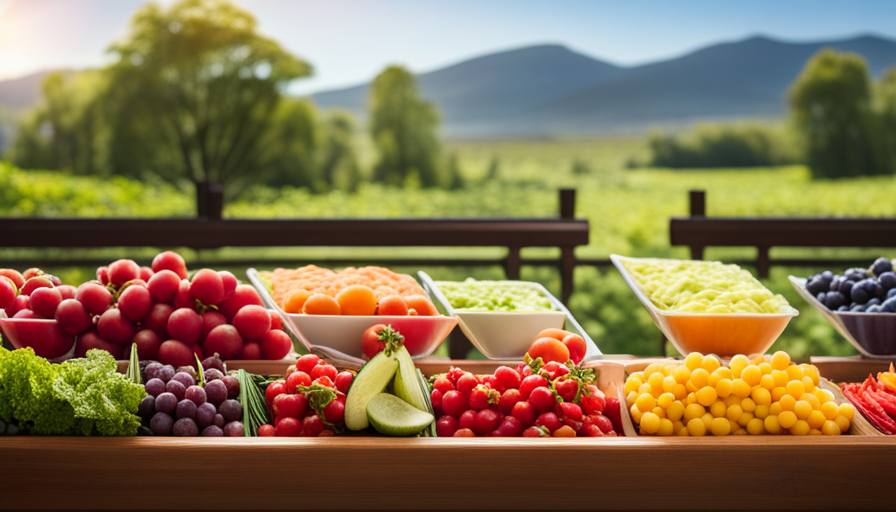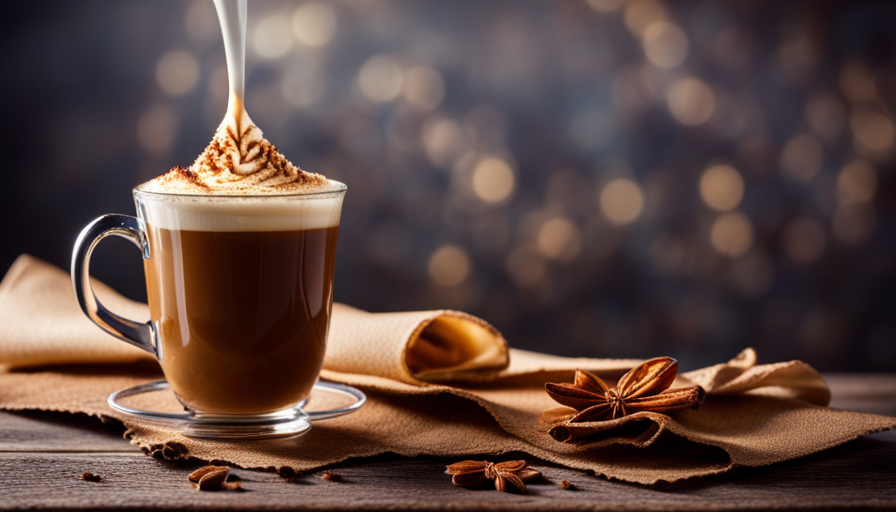When it comes to making coffee, the Moka pot stands out as a symbol of tradition and craftsmanship. Picture it as a skilled artist with their paintbrush, except the Moka pot is crafting your perfect cup of coffee instead.
This ancient Italian invention, with its distinct design and unique brewing method, has long been associated with the production of bitter coffee. However, with the right selection of coffee beans and a careful approach to preparation, the Moka pot can yield a cup of coffee that transcends expectations.
To unlock the full potential of this brewing method, one must begin with the foundation of any great cup of coffee: the beans. The journey towards perfection starts with selecting the right coffee beans, preferably in their whole bean form to ensure optimal freshness.
Italian brands such as Lavazza or Illy are trusted options for Moka pot enthusiasts, offering a range of flavors and roast profiles to suit individual preferences. For those seeking a truly exquisite experience, specific recommendations include Sulawesi Kalossi with its medium roast and delightful flavor profile of fruit, nuts, and chocolate, or the Coffee Bros. Espresso Roast, boasting smooth, red fruit and vanilla flavors with a medium roast. Alternatively, the Koa Coffee Kona Estate Dark Roast presents a dark and robust option, with notes of dark chocolate, roasted hazelnut, cedar, and honey.
However, the journey towards a perfect cup of Moka pot coffee does not end with the selection of beans. The process of grinding the beans is equally crucial, as it determines the optimal extraction of flavors. A medium to medium-fine grind is recommended for Moka pot coffee, allowing for a balanced extraction that captures the essence of the beans without succumbing to bitterness.
To achieve this, it is advisable to invest in a grinder and freshly grind the beans before each brewing session. This ensures that the coffee grounds are at their peak of flavor and aroma, ready to be unleashed in the Moka pot.
As the brewing process begins, it is important to adhere to certain techniques and tips to avoid the potential pitfalls that can lead to bitterness. Unlike other brewing methods, tamping the coffee in a Moka pot is not recommended, as it can impede the flow of water and result in an uneven extraction. Instead, a gentle leveling of the coffee grounds is sufficient.
Additionally, the quality and freshness of the beans play a vital role in the final cup. Low-quality or stale beans can easily turn a potentially sublime experience into
Key Takeaways
- The right grind size, preferably medium to medium-fine, is crucial for optimal extraction in a Moka pot.
- Medium to dark roast coffee is ideal for Moka pots, as light roasts with higher acidity may result in a coffee that is too bright for some preferences.
- Italian brands like Lavazza or Illy are trusted options for Moka pot coffee.
- Sulawesi Kalossi coffee is recommended as the top pick for Moka pot brewing, with its medium roast and flavor profile of fruit, nuts, and chocolate.
Choosing the Right Beans
When considering the art of brewing perfect coffee in a Moka pot, one crucial aspect is selecting the appropriate beans for optimal flavor extraction. Different roast levels play a significant role in achieving the desired taste in Moka pot coffee.
Medium to dark roast beans are generally recommended for Moka pots, as they provide a rich and robust flavor that is similar to espresso. However, it is essential to explore the flavor profiles of different coffee beans to find the perfect match for your preferences.
Some beans offer notes of fruit, nuts, and chocolate, while others have a smoother taste with hints of vanilla and red fruit. By experimenting with various beans and roast levels, coffee enthusiasts can discover the ideal combination that suits their taste buds and ensures a flavorful and satisfying cup of coffee from their Moka pot.
Grinding for Optimal Extraction
To achieve the best extraction in a Moka pot, the grind size plays a crucial role. The right grind size allows for optimal flavor extraction and prevents over-extraction, which can result in a bitter cup of coffee.
The medium to medium-fine grind is recommended for Moka pot coffee, as it allows for a balanced extraction.
The importance of water temperature: Maintaining the correct water temperature is essential for brewing coffee in a Moka pot. The water should be heated to around 195-205°F (90-96°C) to ensure proper extraction and avoid under or over-extraction.
The role of brewing time in Moka pot coffee: The brewing time in a Moka pot should be carefully monitored to achieve the desired strength and flavor. Typically, it takes about 4-5 minutes for the coffee to brew in a Moka pot. However, the brewing time can vary depending on factors such as the grind size, heat source, and personal preference. It is recommended to experiment with brewing times to find the perfect balance for your taste.
Recommended Coffee Brands
Italian brands such as Lavazza and Illy are widely trusted options for selecting coffee suitable for brewing in a Moka pot. These brands have a long history of producing high-quality coffee, and their expertise in the coffee industry is well-regarded.
One advantage of using pre-ground coffee is convenience, as it eliminates the need for grinding beans at home. However, there are some drawbacks to consider. Pre-ground coffee may not be as fresh as grinding whole beans, which can affect the overall flavor and aroma of the brew. Additionally, the grind size may not be optimal for Moka pot brewing, leading to under-extraction or over-extraction.
To explore different flavor profiles, it is recommended to experiment with various brands and roasts. Medium to dark roasts are generally preferred for Moka pots, as they can provide a rich and robust flavor profile.
Brewing Techniques and Tips
For optimal extraction and a flavorful brew, it is crucial to pay attention to the brewing techniques and tips when using a Moka pot. Here are some key tips to consider:
-
Moka pot maintenance:
- Regularly clean the Moka pot to remove any coffee residue and oils that can affect the taste of the brew.
- Replace the rubber gasket and filter regularly to ensure proper seal and prevent leakage.
- Store the Moka pot in a dry place to avoid rust and maintain its functionality.
-
Experimenting with brewing times:
- Adjust the heat source to achieve a steady and gentle brew. Avoid high heat, as it can result in over-extraction and bitterness.
- Start with a shorter brewing time and gradually increase it to find the perfect balance between extraction and flavor.
- Pay attention to the color and consistency of the coffee as it brews to determine the ideal brewing time for your preference.
By following these brewing techniques and tips, you can enhance your Moka pot brewing experience and enjoy a delicious cup of coffee with rich flavors and aromas.
Avoiding Bitterness
Bitterness, an undesirable characteristic often associated with Moka pot coffee, can be mitigated by selecting the right beans and employing proper brewing techniques. One important factor to consider is the role of water temperature. Brewing with water that is too hot can lead to over-extraction and bitterness, while water that is too cold may result in under-extracted flavors. It is recommended to use water that is heated to around 195°F (90°C) for optimal extraction and balanced flavors. Additionally, the importance of proper cleaning and maintenance should not be overlooked. Residual coffee oils can build up over time and negatively impact the taste of the brew. Regularly cleaning the Moka pot, including the filter and gasket, can help maintain the purity of flavors and prevent bitterness from developing. By paying attention to water temperature and maintaining cleanliness, a delicious and non-bitter Moka pot coffee can be achieved.
| Column 1 | Column 2 | Column 3 |
|---|---|---|
| Select the right beans | Use water at the right temperature | Proper cleaning and maintenance |
| Choose quality coffee beans with rich flavors and a hint of sweetness or spice | Brew with water heated to around 195°F (90°C) for balanced extraction | Regularly clean the Moka pot, including the filter and gasket to prevent bitterness |
| Avoid low-grade or stale coffee beans | Avoid brewing with water that is too hot or too cold | Remove residual coffee oils to maintain purity of flavors |
Frequently Asked Questions
What are some popular coffee blends specifically designed for Moka pot brewing?
Popular coffee blends specifically designed for moka pot brewing include Gimme! Leftist Espresso and Coffee Bros. Espresso Roast.
Gimme! Leftist Espresso is a medium roast blend with flavor notes of brown sugar, sweet vanilla, and milk chocolate, making it an ideal choice for moka pot brewing.
Coffee Bros. Espresso Roast is another medium roast option, known for its smoothness and flavor profile of smooth, red fruit, and vanilla.
These blends are specifically crafted to enhance the unique flavor profile of moka pot coffee.
Can I use pre-ground coffee in a Moka pot?
Using pre-ground coffee in a Moka pot is a convenient option, but it has its pros and cons.
One advantage is the ease of use, as pre-ground coffee eliminates the need for grinding beans. However, the downside is that pre-ground coffee may not be as fresh as grinding whole beans yourself. Additionally, the grind size may not be ideal for Moka pot brewing, which can affect the extraction and result in a subpar coffee flavor.
It is recommended to use alternative coffee grinds, such as medium to medium-fine grind, for optimal extraction in a Moka pot.
How can I ensure the freshness of my coffee when using a Moka pot?
Ensuring the freshness of coffee when using a Moka pot is crucial for a satisfying brew. To maintain freshness, proper storage of coffee beans is essential. Storing beans in an airtight container in a cool, dark place helps preserve their flavor and aroma.
Additionally, purchasing whole bean coffee and grinding it just before brewing ensures optimal freshness. By following these practices, coffee enthusiasts can enjoy the vibrant and flavorful experience that a Moka pot can offer.
Are there any specific brewing techniques or tips for achieving the best results with a Moka pot?
Brewing techniques and tips for achieving the best results with a moka pot involve several key factors.
Firstly, using the right grind size is crucial, with a medium to medium-fine grind recommended for optimal extraction.
Additionally, choosing high-quality coffee beans, preferably freshly ground, ensures freshness and the desired flavor profile.
It is also important to avoid over-extraction by not tamping the coffee grounds.
Lastly, experimenting with different brewing variables, such as water temperature and brewing time, can help fine-tune the taste to personal preference.
Is it possible to make a creamy and frothy texture similar to espresso with a Moka pot?
While a moka pot cannot produce the same creamy and frothy texture as espresso, there are alternatives to achieve a similar experience.
One option is to froth milk separately using a milk frother or a handheld frother, and then pour it over the brewed moka pot coffee. This can create a creamy texture and enhance the overall taste.
However, it is important to note that the taste and texture of moka pot coffee differ from espresso due to variations in extraction methods and brewing techniques.
How Does Coffee Cupping Techniques Contribute to Brewing Perfect Coffee in a Moka Pot?
Coffee cupping techniques are essential for brewing perfect coffee in a Moka pot. A beginner’s guide to coffee cupping can help identify the finest beans for this method. It allows you to assess aroma, flavor, and body, ensuring a rich and flavorful Moka pot brew.
Conclusion
In the pursuit of brewing the perfect cup of coffee in a Moka pot, it is crucial to pay attention to the selection of coffee beans. Opt for medium to medium-fine grind size and choose reputable Italian brands like Lavazza or Illy to enhance the flavor profile of the coffee.
Tamping the coffee is discouraged, as it can lead to bitterness. To avoid this, use fresh, high-quality beans and ensure proper extraction.
In conclusion, the art of brewing coffee in a Moka pot requires dedication and precision. However, the end result is a delightful cup of aromatic and flavorful coffee that transcends the mundane.

















